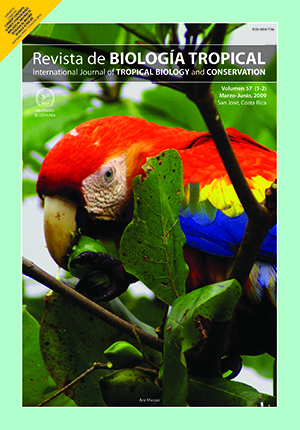Resumen
Se estudió la anatomía de la madera de 29 especies de 10 géneros de la tribu Detarieae, subfamilia Caesalpinioideae, enfocado hacia la identificación de la estructura de la madera y su comparación con la tribu Caesalpinieae. Los especímenes fueron recolectados en Venezuela y pertenecen a la colecciones de maderas del Laboratorio de Anatomía de Maderas de la Facultad de Ciencias Forestales y Ambientales de la Universidad de Los Andes, Mérida, Venezuela y del USDA Forest Service, Forest Products Laboratory, Madison, Wisconsin, USA. Las características anatómicas evaluadas siguen lo propuesto por IAWA List of Microscopic Features for Hardwood Identification (IAWA Committee 1989). Las especies de la tribu Detarieae pueden ser identificadas usando un número de características de diagnóstico combinadas: canales intercelulares longitudinales, radios hete- rocelulares exclusiva o predominantemente uniseriados, patrones del parénquima axial, cristales prismáticos en las células radiales, estructura estratificada y grosor de las paredes de las fibras. Estos caracteres también proporcionan una valiosa información para estudios sistemáticos y filogenéticos. Se presenta la descripción anatómica a nivel de género, una tabla sinóptica con los caracteres de diagnóstico principales y fotomicrografías de las características más importantes.
Esta obra está bajo una licencia internacional Creative Commons Atribución 4.0.
Derechos de autor 2009 Revista de Biología Tropical
Descargas
Los datos de descargas todavía no están disponibles.

